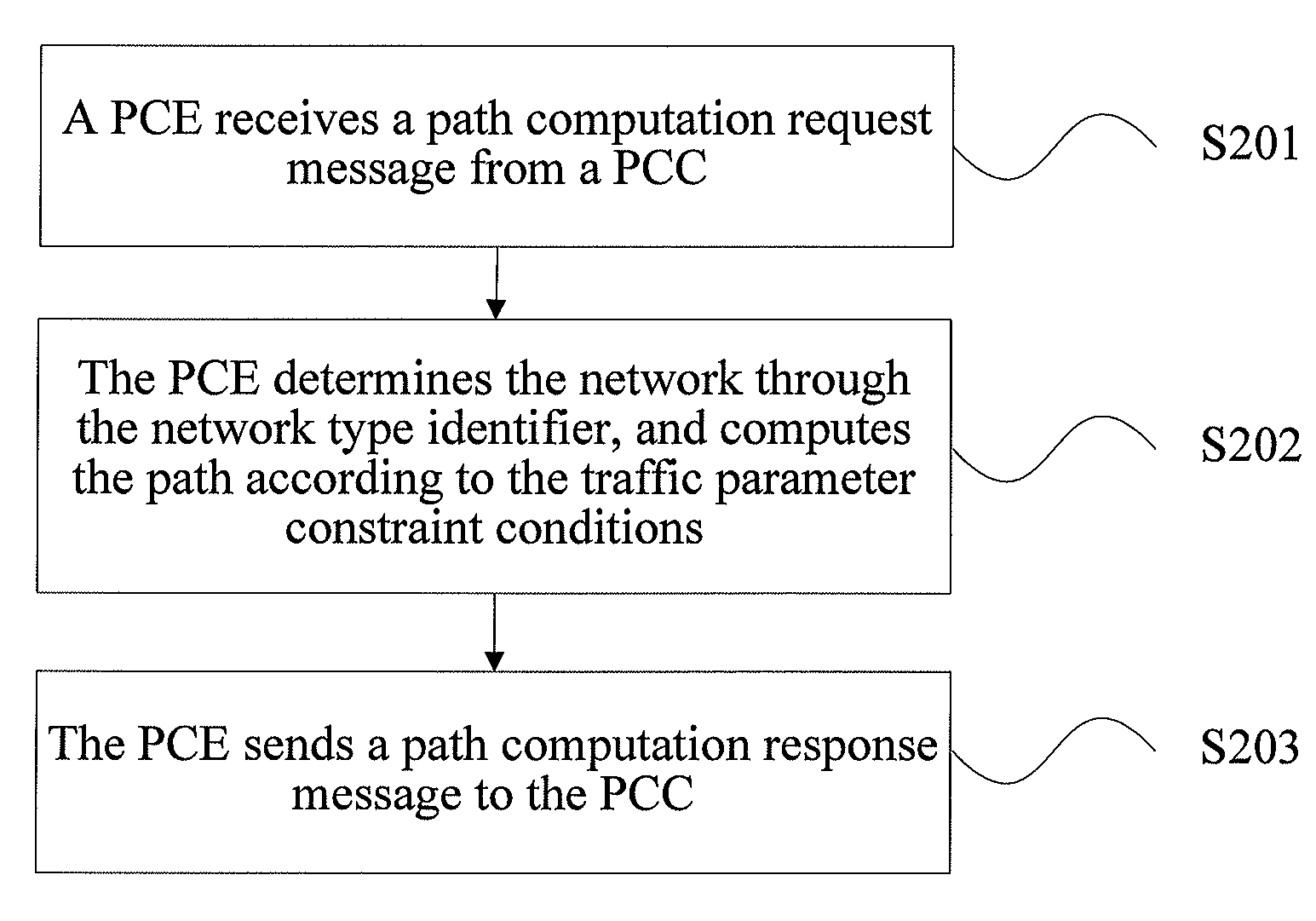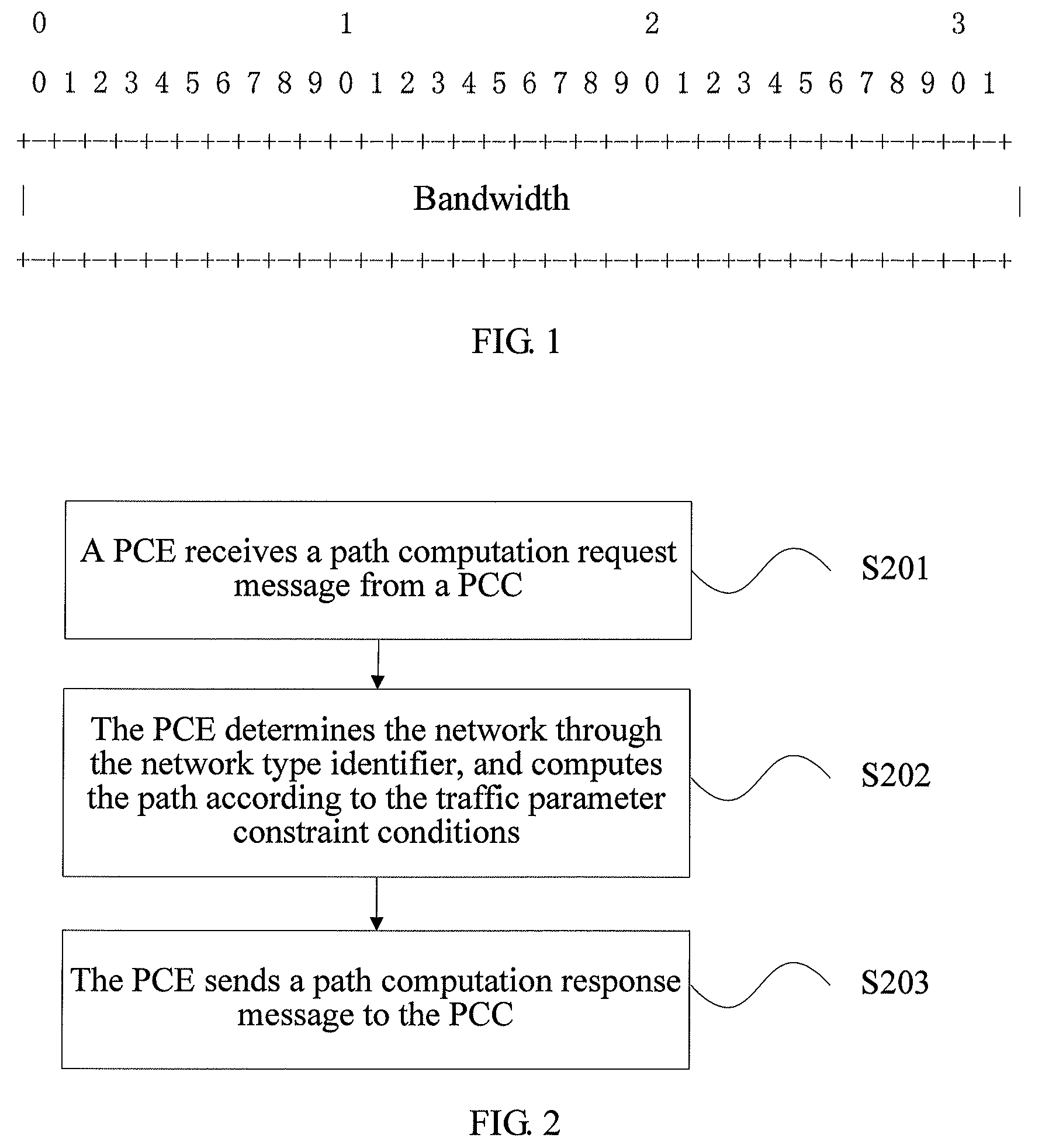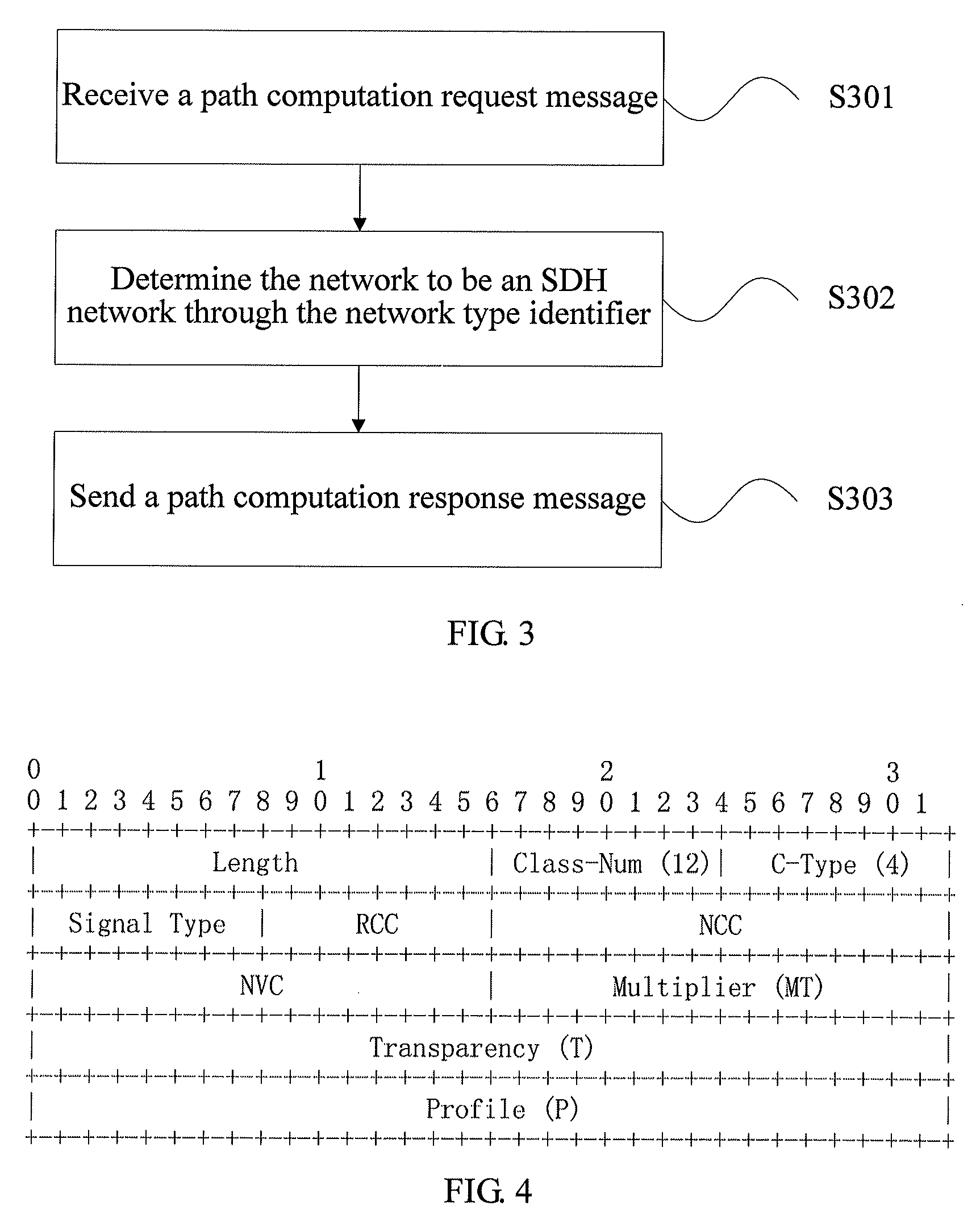Path computation method, path computation element, node device, and network system
a computation method and path computation technology, applied in the field of communication technologies, can solve the problems of complex computation methods, difficult to have a total traffic engineer data base (tedb) for distributed computed nodes, and inability to completely meet the path computation requirements of an mrn
- Summary
- Abstract
- Description
- Claims
- Application Information
AI Technical Summary
Benefits of technology
Problems solved by technology
Method used
Image
Examples
embodiment 1
[0041]FIG. 2 is a flow chart of a path computation method according to Embodiment 1 of the present invention. As shown in FIG. 2, the path computation method according to Embodiment 1 of the present invention includes the following steps.
[0042]In step S201, a PCE receives a path computation request message from a PCC, where the path computation request message carries a network type identifier and traffic parameter constraint conditions of a path required to be computed, and the network type identifier indicates a type of a network where the path required to be computed locates.
[0043]In step S202, the PCE determines the network through the network type identifier, and computes the path in the network according to the traffic parameter constraint conditions.
[0044]In step S203, the PCE sends a path computation response message to the PCC, where the path computation response message carries the computed path.
[0045]According to the embodiment of the present invention, a manner of carryi...
embodiment 2
[0046]FIG. 3 is a flow chart of a path computation method according to Embodiment 2 of the present invention. FIG. 4 is a specific format of a Sender Traffic Specification of an SDH according to Embodiment 2 of the present invention.
[0047]As shown in FIG. 3, the path computation method according to Embodiment 2 of the present invention includes the following steps.
[0048]In step S301, a path computation request message is received, where the path computation request message carries a network type identifier and traffic parameter constraint conditions of a path required to be computed, the network type identifier indicates that a network where a path required to be computed locates is an SDH network, and the traffic parameter constraint conditions include a signal type, a concatenation type, and the number of components.
[0049]Specifically, a PCC sends the path computation request message to a PCE, where the network type identifier and the traffic parameter constraint conditions of the...
embodiment 3
[0065]FIG. 5 is a flow chart of a path computation method according to Embodiment 3 of the present invention. FIG. 6 is a specific format of a Sender Traffic Specification of an OTN according to Embodiment 3 of the present invention.
[0066]As shown in FIG. 5, the path computation method according to Embodiment 3 of the present invention includes the following steps.
[0067]In step S501, a path computation request message is received, where the path computation request message carries a network type identifier and traffic parameter constraint conditions of a path required to be computed, the network type identifier indicates that a network where the path required to be computed locates is an OTN network, and the traffic parameter constraint conditions include a signal type, a concatenation type, and the number of components.
[0068]Specifically, a PCC sends the path computation request message to a PCE, where the network type identifier and the traffic parameter constraint conditions of t...
PUM
 Login to View More
Login to View More Abstract
Description
Claims
Application Information
 Login to View More
Login to View More - R&D
- Intellectual Property
- Life Sciences
- Materials
- Tech Scout
- Unparalleled Data Quality
- Higher Quality Content
- 60% Fewer Hallucinations
Browse by: Latest US Patents, China's latest patents, Technical Efficacy Thesaurus, Application Domain, Technology Topic, Popular Technical Reports.
© 2025 PatSnap. All rights reserved.Legal|Privacy policy|Modern Slavery Act Transparency Statement|Sitemap|About US| Contact US: help@patsnap.com



